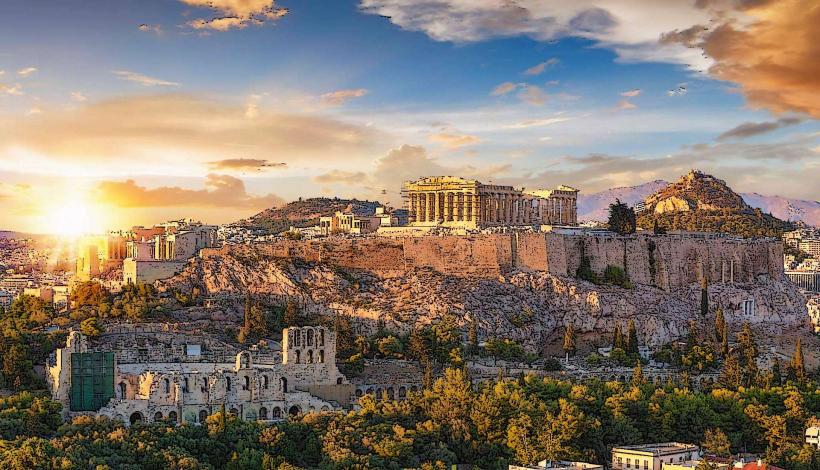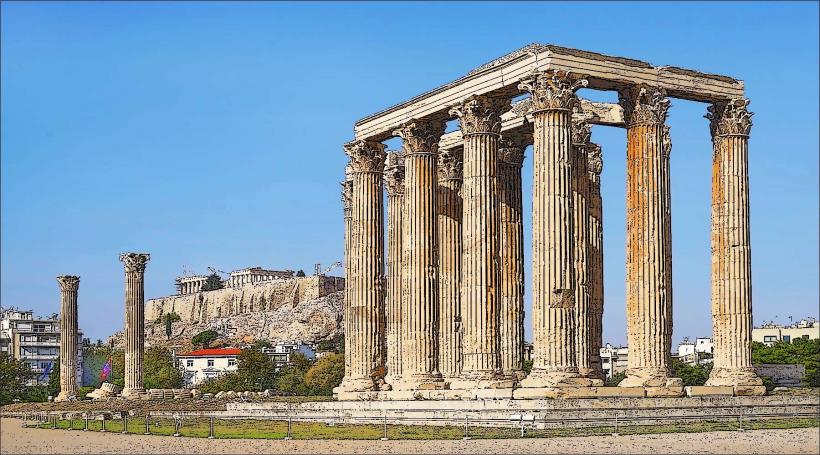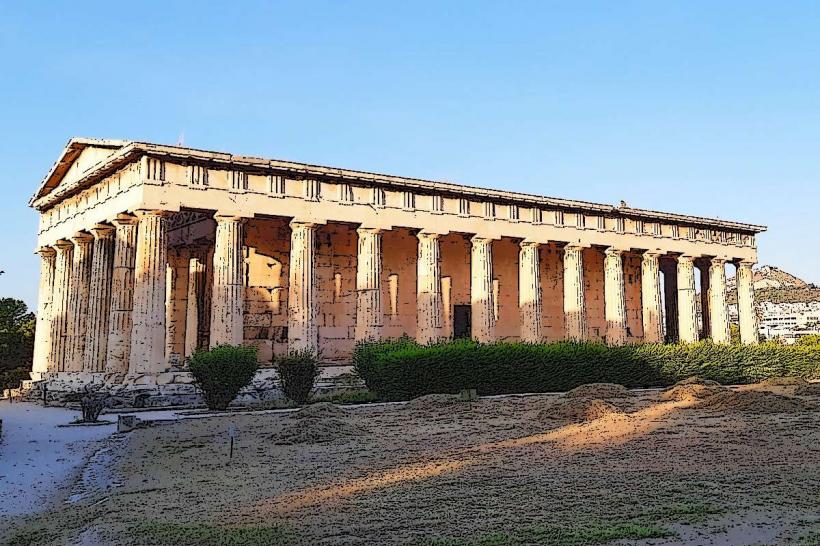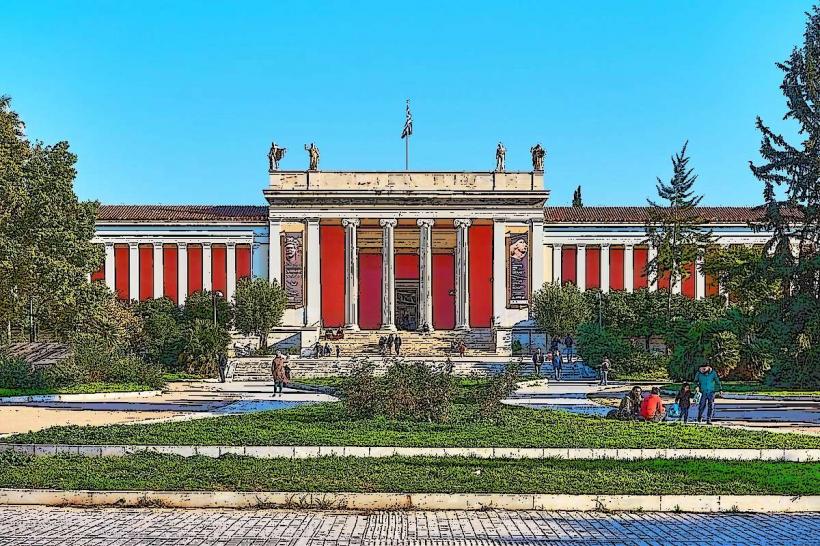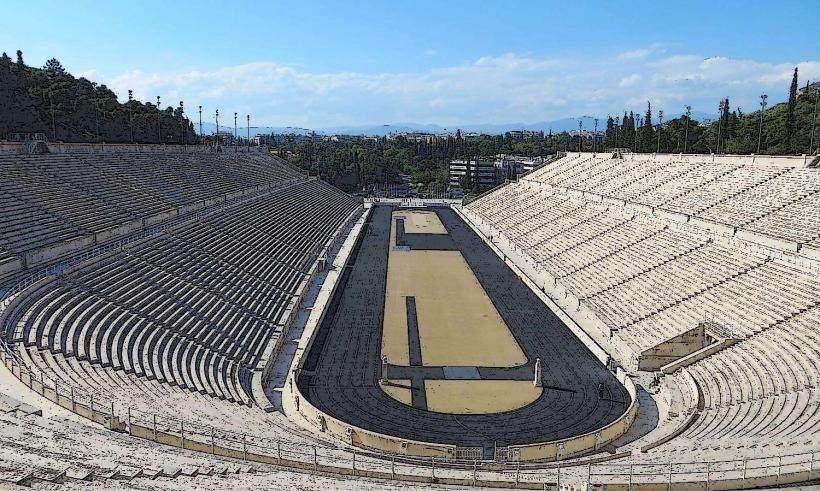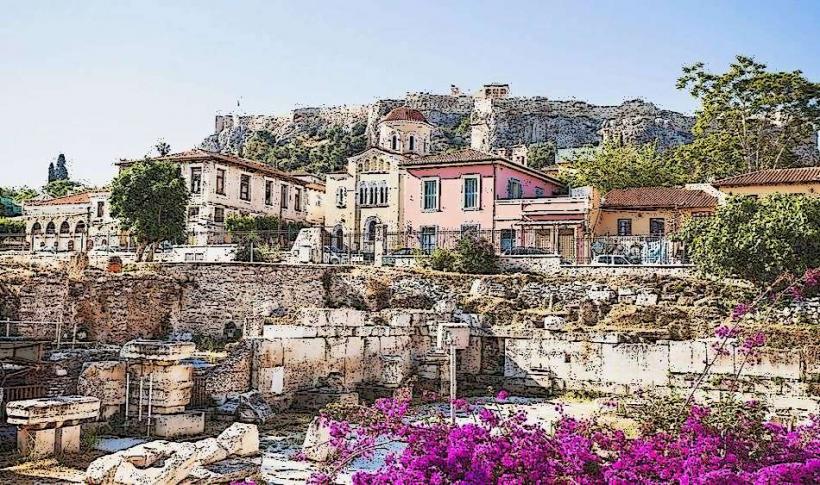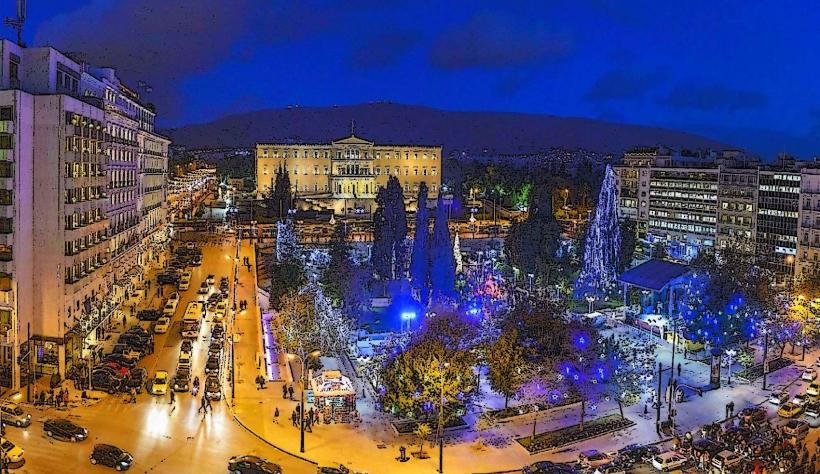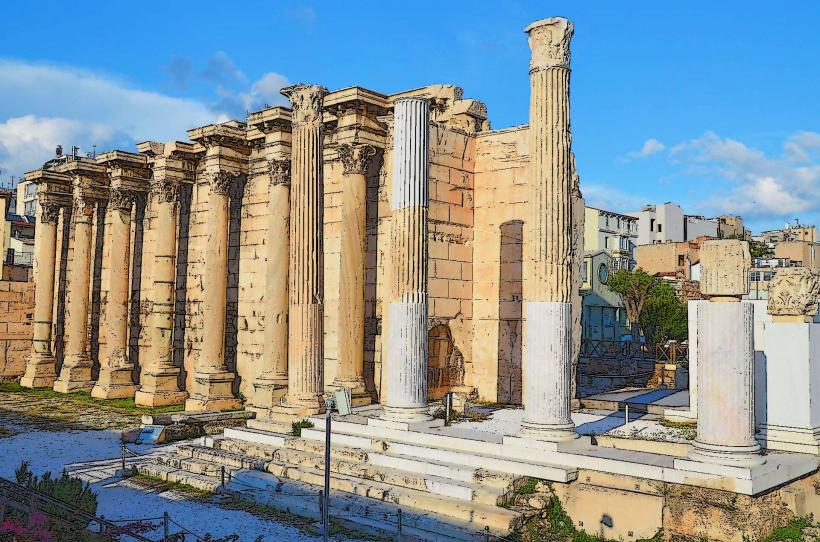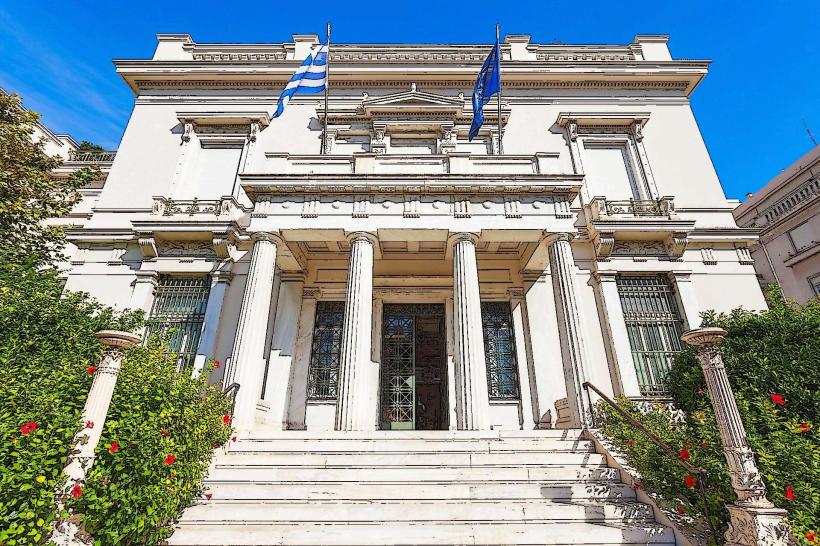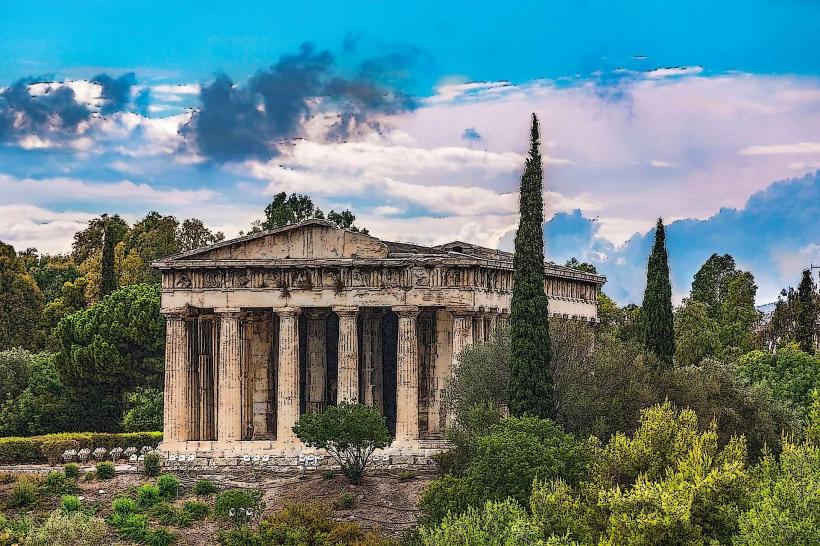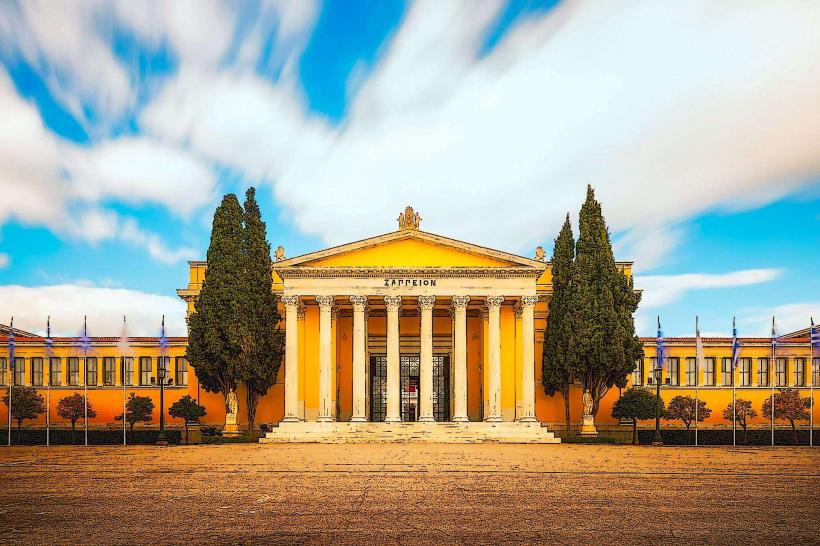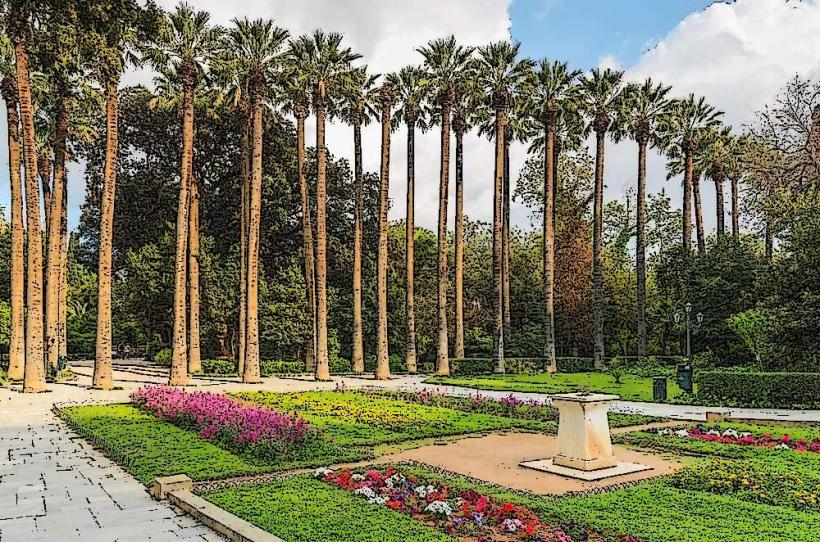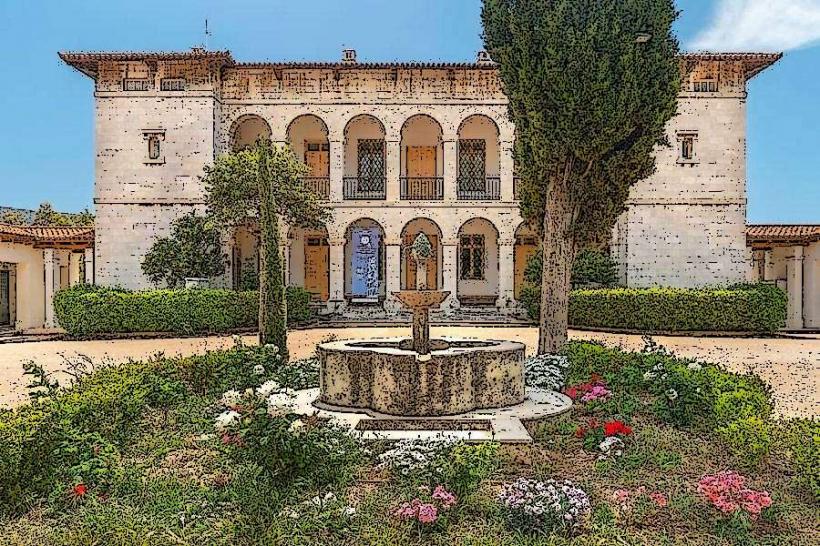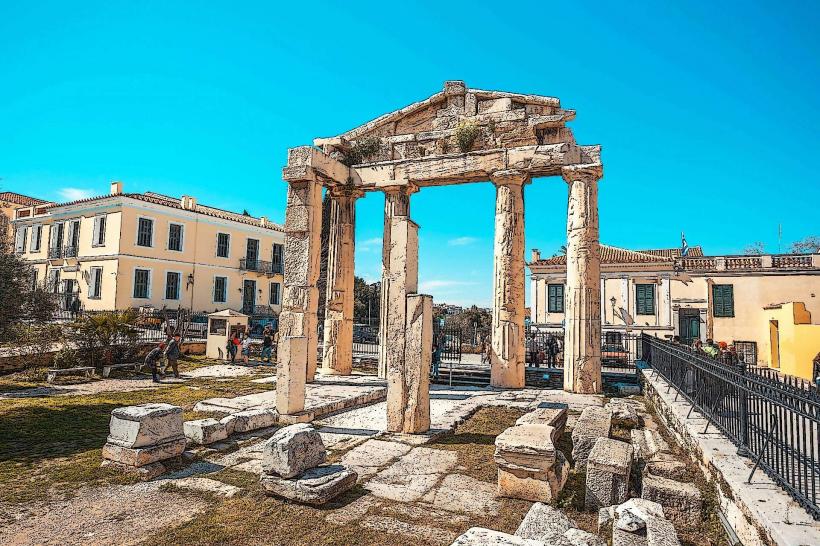Information
Landmark: Museum of Cycladic ArtCity: Athens
Country: Greece
Continent: Europe
The Museum of Cycladic Art (Greek: Μουσείο Κυκλαδικής Τέχνης) is a prominent museum in Athens, Greece, dedicated to the ancient Cycladic culture and art, which flourished in the Aegean Islands during the Early Bronze Age (approximately 3,200–1,100 BCE). The museum showcases a rich collection of Cycladic artifacts, including marble figurines, pottery, jewelry, and tools, providing a fascinating insight into the prehistoric Aegean world.
Overview:
- Location: The museum is located in the Kolonaki district of Athens, an upscale neighborhood near the city center. It is housed in a neoclassical building that combines traditional Greek architecture with modern design elements.
- The Museum of Cycladic Art is a major institution for the study and display of the Cycladic civilization and serves as a key cultural destination for both Greek and international visitors.
History:
- The museum was founded in 1986 by the Nicholas P. Goulandris Foundation, with the goal of preserving and promoting the artistic and cultural heritage of the Cyclades, the group of islands in the central Aegean Sea.
- The museum’s collection is based primarily on the Goulandris family's private collection, which was assembled over many years and includes some of the most important examples of Cycladic art.
Collections:
The Museum of Cycladic Art houses three main collections:
Cycladic Art Collection:
- This is the museum's most significant collection, focusing on artifacts from the Cycladic islands during the Early Bronze Age. The centerpiece of this collection is the iconic Cycladic figurines, which are elegant and simple, often depicting human forms, primarily women, with exaggerated features like elongated limbs and flat faces.
- The marble figurines are some of the most important and well-known pieces of ancient Greek art, famous for their minimalist style and enigmatic beauty. Many scholars believe these figures were used for religious or funerary purposes, though their exact function remains uncertain.
- In addition to figurines, the collection also includes pottery, tools, jewelry, and musical instruments, which reflect the daily life and practices of the Cycladic people.
Ancient Greek Art Collection:
- This collection showcases the development of Greek art from the Archaic to the Hellenistic period. Highlights include vases, sculptures, bronze statues, and pottery that represent the evolution of Greek art from the 6th century BCE onward.
- Artworks from classical Athens and other parts of the Greek world give insight into the culture, religion, and social life of ancient Greece.
Cypriot Antiquities Collection:
- This collection focuses on the art and material culture of ancient Cyprus, a key Mediterranean island known for its mix of Greek and indigenous influences. The collection includes sculpture, pottery, and inscriptions, highlighting the cultural connections between Cyprus, Greece, and the broader ancient world.
Exhibitions and Temporary Collections:
- The Museum of Cycladic Art regularly hosts temporary exhibitions that explore specific themes or feature collections from other museums and institutions around the world. These exhibitions often delve deeper into aspects of ancient Aegean civilization, such as burial practices, religion, and trade in the Bronze Age.
Key Highlights:
- Cycladic Figurines: The museum's collection of marble figurines is the highlight of the Cycladic Art collection. These figures are some of the most famous works of prehistoric art and have greatly influenced modern artists such as Pablo Picasso and Henry Moore.
- Cycladic Pottery and Tools: The museum also houses an impressive array of Cycladic pottery, including ceramic vessels, bowls, and storage jars, as well as tools that were used by the ancient inhabitants of the Cycladic islands for everyday tasks and domestic activities.
- Jewelry: A collection of gold and silver jewelry from the Cycladic period demonstrates the sophistication and craftsmanship of the civilization, with pieces such as earrings, necklaces, and bracelets.
- Marble Sculptures: The museum showcases larger marble sculptures from the Cycladic islands, offering a glimpse into the artistic traditions of the Aegean Bronze Age.
Architecture and Design:
- The Museum of Cycladic Art is housed in a neoclassical building designed by the architect Stavros Kourkoulas. The museum space has been thoughtfully redesigned and expanded to accommodate both the permanent collections and temporary exhibitions.
- The museum blends classical elements with modern design, featuring spacious galleries, open courtyards, and large glass windows that allow natural light to flood the exhibition spaces.
- The Vassilis and Eliza Goulandris Foundation is a significant contributor to the museum’s collection and mission, supporting its role as a center of research and scholarship on Cycladic and ancient Greek art.
Educational and Cultural Activities:
- The Museum of Cycladic Art offers a variety of educational programs, including lectures, workshops, and guided tours for both adults and children. These programs aim to deepen the public's understanding of ancient Greek and Cycladic culture.
- The museum also organizes lectures and symposia featuring experts in fields such as archaeology, history, and art history, making it a key educational hub for those interested in ancient Greek and Aegean civilizations.
Accessibility:
- The Museum of Cycladic Art is centrally located in Kolonaki, one of Athens' most accessible neighborhoods. It is easily reachable by public transportation, including the Athens Metro, with the nearest stop being Syntagma or Evangelismos stations.
- The museum is also within walking distance from other central Athens landmarks, such as the Syntagma Square, the Acropolis, and Plaka.
Summary:
The Museum of Cycladic Art is one of the leading cultural institutions in Athens, dedicated to showcasing the ancient Cycladic civilization and the broader cultural heritage of the Aegean. With its collection of Cycladic figurines, pottery, tools, and jewelry, the museum provides visitors with a unique opportunity to explore the art, culture, and everyday life of the Aegean islands during the Bronze Age. Through its permanent and temporary exhibits, as well as its educational programs, the museum serves as an important center for research and cultural exchange, offering insights into one of the earliest and most enigmatic civilizations in the ancient world.

